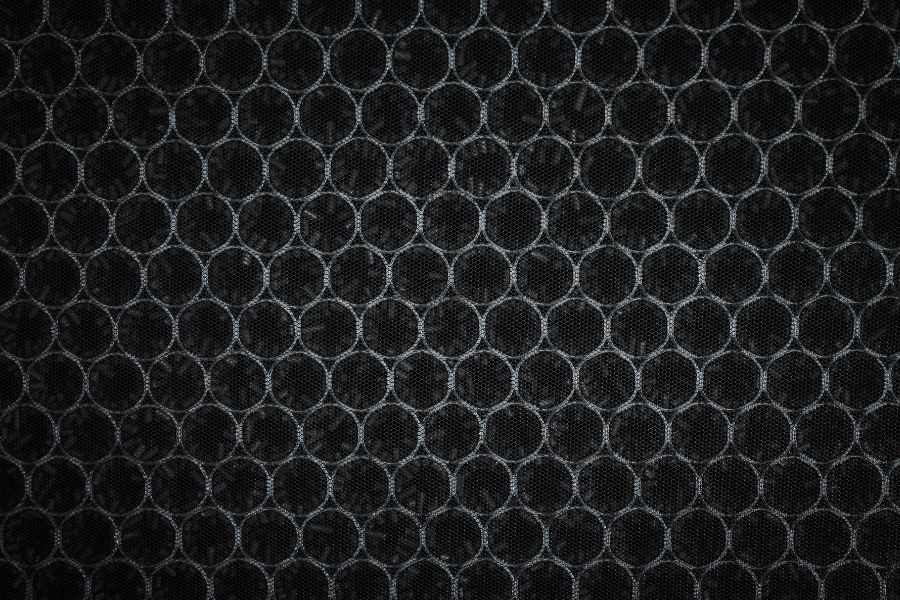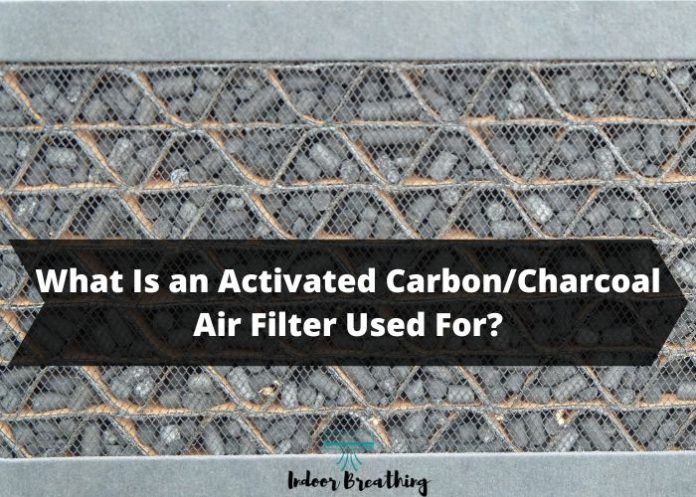If you haven’t used or even heard of an activated carbon or charcoal filter before, there’s no need to worry. But unfortunately, these filters are generally one of the market’s least-known and lesser-understood ones today.
These are the kinds of filters used in an air purifier. Many people don’t know about them because air purifier manufacturers don’t generally advertise this feature.
Instead, they market the aspects customers most likely understand, such as an ionic generator or a true HEPA filter. Hence, the activated carbon filter may not be common knowledge.
Table of Contents
What Is an Activated Carbon Filter?
An activated carbon or charcoal air filter is a highly effective and powerful air purifier. It’s designed to do what no other filter can, so you’d better have one on your purifying machines.
The two names are the same, with the ‘activated’ part meaning there’s been a special oxygen treatment for opening up the carbon atoms.
Once these pores are opened, the same surface area of the charcoal increases. This makes it more efficient at absorbing airborne pollutants in particles and molecules.
What Is the Filter Used For?

The activated carbon or charcoal air filter is used for absorbing smells, gases, odors, and pollutants from the air around it. This would include dust mites, fungus spores, animal smells, mold smells, cooking smells, and any smoke that threatens to destroy the indoor atmosphere.
When the absorbed particles get into the charcoal filter, they attach themselves and are trapped. Hence, they cannot go back into the air, resulting in fresher, cleaner indoor air.
Breathing in such a clean environment automatically becomes easier and poses few risks.
Taking Care of Activated Carbon/Charcoal Filters
Air filters containing activated carbon or charcoal are washable, meaning you can rid them of the particles and harmful elements trapped inside. Since they would all go down the drain, there’s no chance that the pollutants will affect the indoor environment again.
After washing, the filters may also be used again until a certain time period. This ensures that no one has to buy a replacement anytime soon.
On the other hand, a degradable HEPA filter would need to be replaced once it gets too full to operate properly. Therefore, a carbon or charcoal choice would be a more cost-effective option.
Why You Should Consider an Activated Carbon/Charcoal Air Filter

If you’re looking for a new air filter for your home, you should seriously consider one with activated carbon/charcoal. This is because an investment like this would clear indoor air and absorb all unwanted odors better than any other kind.
There are other air purification methods, but they cannot remove unnecessary smells from an indoor space. In addition, their filtering is limited in this area so a charcoal filter would do double the job for around the same price.
A Brief History Of Carbon Filtration
Carbon filtration is not a new concept; it is not getting outdated anytime soon. On the contrary, humans have been drinking charcoal-purified water for several centuries.
Many experts have claimed that even one gram of activated charcoal can contain several hundred square meters within itself for the activation part. Along with this, activated charcoal filters are chemically treated for filtering certain dangerous pollutants.
The earliest way carbon was used for filtering was to remove any impurities in metal smelted for making bronze. The Egyptian race was probably the first to use this filtering method as a medicinal one.
They did this by using it to remove any odors left after infections. Even 16-18th-century soldiers were known to store water in charcoal-smeared or charred barrels. This served to keep the content fresh, even on long voyages.
Another war use of charcoal was in gas masks. They utilized charcoal during World War 1, which helped filter out poisonous gases to some extent.
This kind of charcoal or carbon may not have been too effective, but it caught the attention of anyone having a business in filtering.
After the First World War, special research and development were devoted to producing activated carbon. This dramatic growth in that time period led to the current activated charcoal air filter we have today.
How to Use Carbon Filters Correctly?
Even after you get a carbon or charcoal filter for indoor air cleansing, it still has to be appropriately used to affect you positively. If not, you would likely waste your money on a poor model that won’t help clean the indoor air.
First, the carbon air filters must utilize a good amount of carbon. As with a questionable quality filter, the filter will get saturated immediately if the carbon level is too low.
It wouldn’t be of any use in such a case. Be sure to search for a filter that contains five pounds of carbon or charcoal substance. Anything less than this is probably too little.
Of course, there are differences in the quality and properties of the carbon used. However, using the five-pound rule of thumb, you can probably be on the safe side.
The airflow in such filters is also essential. This has to be slow enough to swell in the carbon, releasing all the unwanted pollutants inside. Once this dwell time is long enough, the filter effectively cleanses the room’s air.


